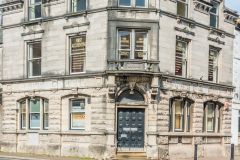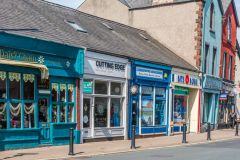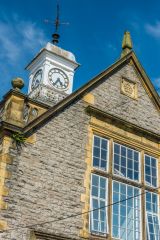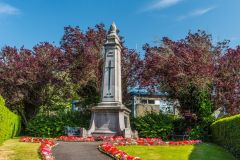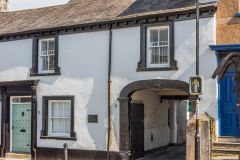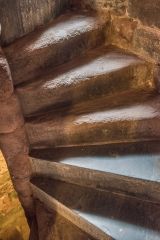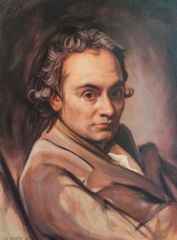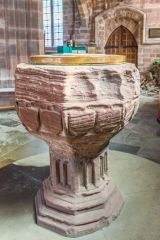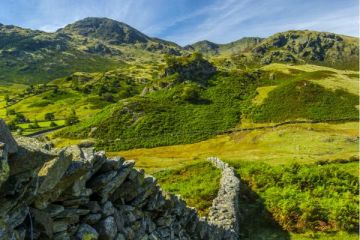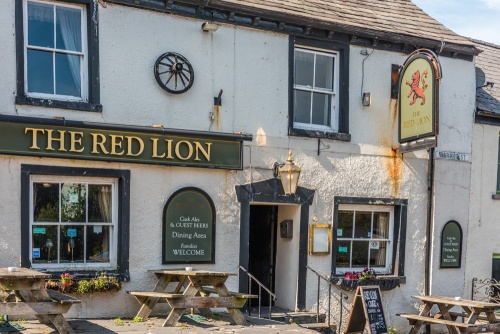
The attractive town of Dalton-in-Furness was once the administrative capital of the Furness region. It has a history going back to the Saxon period and was recorded in the Domesday Book of 1086 as Daltune. The town stands on a hilltop site well inland from the sea. During the medieval period, the town's inland location made it relatively safe from pirates.
History
Dalton grew in importance in the 12th century after the Cistercian monastery of Furness Abbey was established a few miles away near what is now Barrow-in-Furness. Much of the Furness peninsula was owned by Furness Abbey, and as the abbey prospered, so did Dalton. It gained a royal charter in 1239, giving the townsfolk the right to hold a weekly market and an annual fair.
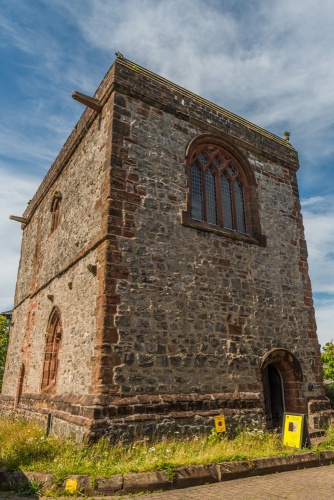
Dalton may have owed its early growth to the monks of Furness Abbey, but after the abbey was suppressed by Henry VIII in 1537 the town's importance faded. It was not until iron ore was discovered locally in the 19th century that Dalton began to recover. Even then, Dalton's regional importance faded as Ulverston and the newly-created Barrow dominated the region's iron ore trade.
The iron mines are closed today, but there is still quarrying activity and brickmaking in the Dalton area.
Dalton Castle
At the top of the Market Place stands Dalton Castle, a pele tower built by the powerful Abbot of Furness Abbey in the early 14th century after a devastating raid by Robert Bruce laid waste to the region. The castle was used to administer the abbey's vast estates and dispense justice.
What remains today is a simple rectangular fortified tower standing three storeys high. The castle was used to hold Parliamentary soldiers captured during the Civil War. The interior was rebuilt in 1856 but you can still see the entrance to the medieval dungeons. The castle is owned by the National Trust but operated by a group of local volunteers.
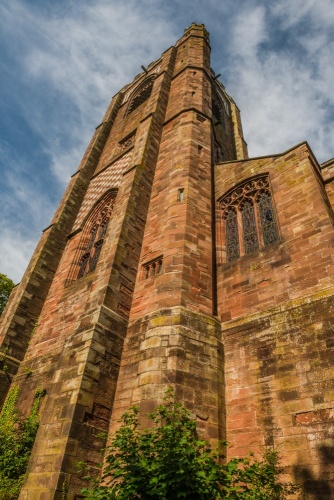
St Mary's Church
Just behind Dalton Castle stands St Mary's Church, begun in 1882 to replace an earlier medieval church. The architects were Edward Paley and Hubert Austin of Lancaster, who designed many churches across the north of England. St Mary's is in Gothic Revival style and is notable for the red and white chequerboard pattern of the stonework on its west tower and high on the nave and chancel walls.
Highlights include medieval stained glass panels and a 14th-century font brought here from Furness Abbey. In the churchyard is the grave of the 18th-century portrait artist George Romney, who was born in Dalton before making his name as one of Georgian London's most famous painters.
Also in the churchyard is a memorial plaque marking the mass grave where over half the town's population were buried after an outbreak of the plague in 1631.
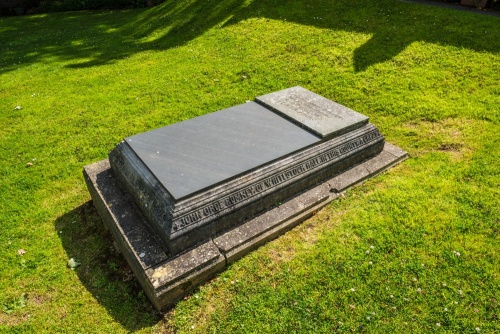
The Market Cross
Just below the castle stands the market cross, erected in 1869-70 on the site of the town's medieval cross. Below the cross are two curving stone benches. These wide benches with their slanted top surfaces were used to display fish for sale during public market days.
Just beyond the market cross is an ornate cast-iron drinking fountain erected in 1897 to celebrate Queen Victoria's Diamond Jubilee. There are roundels over each arch; one depicts Queen Victoria, two depict herons, while the fourth bears the inscription, 'ERECTED IN MEMORY OF HER MAJESTYS DIAMOND JUBILEE', with the rather practical addition, 'Keep the Pavement Dry'.
There are several interesting historic inns along Market Place and Main Street. The Red Lion dates to the 17th century, while the White Horse and the Cavendish Arms both date to the Victorian period.
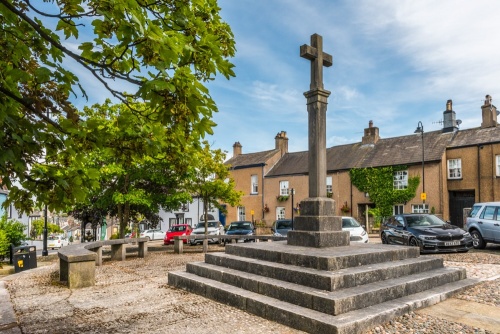
At the bottom of Market Street is Tudor Square, once used to water the horses drawing heavy carts of iron ore to Barrow for shipping. Off King's Drive is Dowdales School, a 20th-century school formed around a historic manor house owned by George Ashburner of Elliscales.
On Station Road is the former Local Board Offices, built in 1894 and easily spotted by its striking clock tower and cupola. The Local Board Offices were intended as a market hall but was altered to create a combined council office and fire hall.
Further along Station Road is the town's war memorial, erected in 1922. The column of Portland stone is carved with the names of those who lost their lives in WI, while a plaque on the rear of the monument bears the names of those who died in WWII. The front of the column has an oversized medieval sword and the inscription 'Pro Patria, AD 1914-1919'.
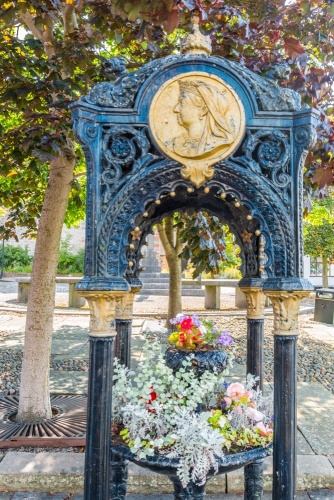
The major historic attraction outside Dalton is Furness Abbey, now owned by English Heritage. A few miles to the east is Gleaston Mill, a restored water mill, and Gleaston Castle, a ruinous medieval castle (no public access).
Getting There
Dalton-in-Furness is just off the A590 between Barrow-in-Furness and Ulverston. There is a free public car park on Broughton Road, just off Tudor Square.
About Dalton-in-Furness
Address: Dalton-in-Furness,
Cumbria,
England
Attraction Type: Town
Location: Just off the A590 betwen Barrow and Ulverston.
Location map
OS: SD229740
Photo Credit: David Ross and Britain Express
POPULAR POSTS
HERITAGE
 We've 'tagged' this attraction information to help you find related historic attractions and learn more about major time periods mentioned.
We've 'tagged' this attraction information to help you find related historic attractions and learn more about major time periods mentioned.
Find other attractions tagged with:
NEARBY HISTORIC ATTRACTIONS
Heritage Rated from 1- 5 (low to exceptional) on historic interest
Dalton Castle - 0.2 miles (Castle) ![]()
Dalton-in-Furness, St Mary's Church - 0.3 miles (Historic Church) ![]()
Furness Abbey - 1.6 miles (Abbey) ![]()
Bow Bridge - 1.7 miles (Historic Building) ![]()
Gleaston Castle - 2.6 miles (Castle) ![]()
Gleaston Mill - 2.7 miles (Historic Building) ![]()
Swarthmoor Hall - 3.8 miles (Historic House) ![]()
Dock Museum - 3.9 miles (Museum) ![]()
Nearest Holiday Cottages to Dalton-in-Furness:
Dalton-in-Furness, Cumbria
Sleeps: 24
Stay from: £3691 - 15825
Dalton-in-Furness, Cumbria
Sleeps: 18
Stay from: £1607 - 8746
Dalton-in-Furness, Cumbria
Sleeps: 10
Stay from: £1341 - 5360
More self catering near Dalton-in-Furness
